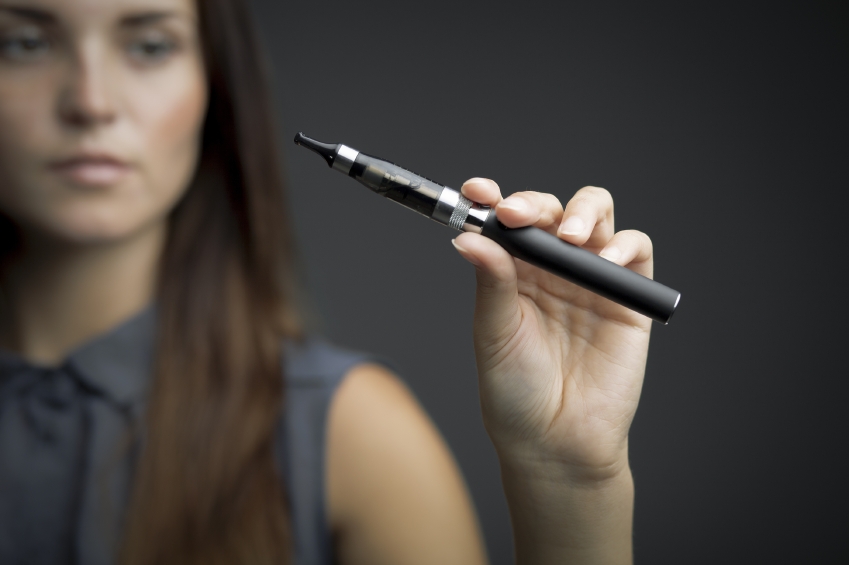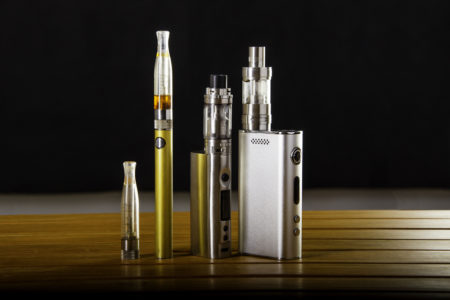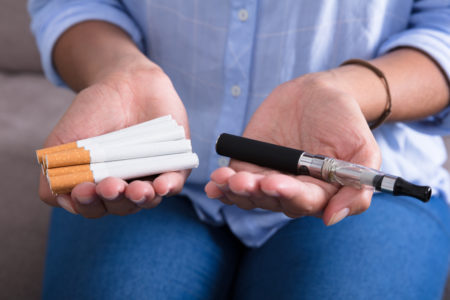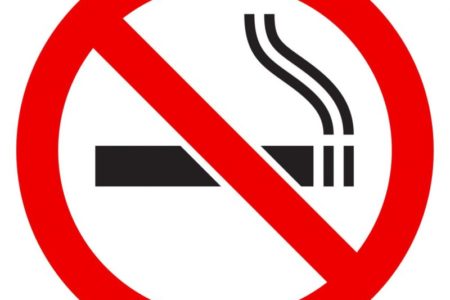
Share On Social!
The U.S. Food and Drug Administration (FDA) will investigate 127 reports of people suffering seizures and other neurological symptoms after using e-cigarettes.
CDC reported 26 deaths on vaping-related lung illness and on Oct. 11, 2019, a17-year-old boy from the Bronx died of vaping-related illness, becoming the first teen fatality.
Later, CDC produced a report suggesting that the outbreak of lung injury is associated with the use of e-cigarette, or vaping, products.
As of Nov. 27, 2019, the CDC announced 47 deaths and 2,290 illnesses and the American Medical Association called for an immediate ban on all electronic cigarettes and vaping devices.

The FDA said these reported cases occurred between 2010 and 2019, and, in addition to seizures, some people reported fainting or tremors.
“It is imperative that health care professionals, consumers, parents, teachers, and other concerned adults, as well as youth and young adult users, report detailed information about any past or future incidents of seizures following e-cigarette use to the FDA,” Sharpless FDA Commissioner Ned Sharpless said in a statement.
More Big News on E-Cigarettes and Vaping
On Sept. 9, 2019, FDA just sent a warning letter to Juul Labs that they “violated federal regulations by selling its vaping products as a safe alternative to traditional tobacco cigarettes without approval.”
The agency said it acted after reviewing testimony from a recent investigation by a House Oversight and Reform subcommittee into Juul’s marketing and promotion practices.
On Sept. 11, 2019. The Trump administration announced that it is preparing to ban flavored e-cigarettes as federal health officials call for restrictions to combat an outbreak of a mysterious lung disease that has sickened hundreds and killed at least six people, U.S.
As the popularity of e-cigarettes has surged in recent years, so has the public’s confusion over the health risks these products pose.
A new study by University of Michigan published online on Sept. 18, 2019, in the New England Journal of Medicine, reveals that teen e-cigarette use doubles since 2017.
“Nobody knows what it does to the human lung to breathe in and out aerosolized propylene glycol and glycerin over and over. It’s an experiment, frankly,” Dr. Robert Jackler, founder of Stanford Research Into the Impact of Tobacco Advertising, said at a congressional hearing last month.
On August 23, 2019, IIlinoi reported possible first death from vaping-related illness. The Illinois Department of Public Health (IDPH) learned of the death of an individual who had recently vaped and was hospitalized with severe respiratory illness.
New York state Governor Andrew Cuomo on Sept. 15, 2019, has announced an “emergency executive action” that will ban sales of flavored e-cigarettes.
“The severity of illness people are experiencing is alarming and we must get the word out that using e-cigarettes and vaping can be dangerous,” said Dr. Ngozi Ezike, director of the Illinois Department of Public Health, said to the press.
Michigan on Sept. 4, 2019 became the first state in the country to ban flavored e-cigarettes, as concerns continue to grow over the potential dangers of vaping. Flavored nicotine vaping products will be banned in retail stores and online in the state. Any marketing of the products that include the words “clean,” “safe,” and “healthy” have also been banned.
Apple said on Nov. 15, 2019, that it is removing all apps related to electronic cigarettes and vaping from the company’s app store, citing concerns about the rash of deaths and lung injuries linked to the products.
What Do We Know About E-cigarettes?
In 2018, CDC and FDA data showed that more than 3.6 million U.S. youth, including 1 in 5 high school students and 1 in 20 middle school students, used e-cigarettes in the previous month.
According to the latest CDC report more than 1 of every 4 high school students (27.5%) reported in 2019 that they used electronic cigarettes in the past 30 days
According to a National Institutes of Health report, e-cigarettes lead more kids to smoke. Worse, it has the potential to harm users, especially young ones.
“We have to remember the developing brain [is] exquisitely sensitive to chemicals,” Dr. Jennifer Ashton, ABC News’ chief medical correspondent, said. “We know nicotine is highly addictive that can result in a lack of concentration and absolutely can be a gateway… and can result in difficulty with impulse control. Not something that we need more of in a teenager or a young adult.”
E-cigarettes are still relatively new, and researchers need to conduct more analysis over a more extended period to know what the long-term effects may be. What they do know is that these products contain high concentrations of nicotine, which if swallowed, can be poisonous and cause side effects such as seizures.
Moreover, e-cigarettes and vapes may contain poisonous chemicals or substances that can cost health damage, such as volatile organic compounds. Those substances can cause:
- Eye, nose, and throat irritation
- Headaches and nausea
- Damage to the liver, kidney, and nervous system

Flavoring chemicals used in e-cigarettes are more toxic than others. Many studies have shown that flavors contain different levels of a chemical called diacetyl that has been linked to a severe lung disease called bronchiolitis obliterans.
Another cancer-causing substance, Formaldehyde, “may form if e-liquid overheats or not enough liquid is reaching the heating element (known as a “dry-puff”),” according to the American Cancer Society.
The latest research from New York University, showed that e-cigarette vapor causes lung cancer and potentially bladder cancer in mice and damaging their DNA. The study found that 9 of 40 mice exposed to E-cig smoke with nicotine for 54 weeks developed lung adenocarcinomas.
A recent study from Stanford University found that e-cigarette flavorings damage human blood vessel cells grown in the lab — even in the absence of nicotine.
“This study clearly shows that e-cigarettes are not a safe alternative to traditional cigarettes,” Dr. Joseph Wu, director of the Stanford Cardiovascular Institute, said in a statement. “When we exposed the cells to six different flavors of e-liquid with varying levels of nicotine, we saw significant damage. The cells were less viable in culture, and they began to exhibit multiple symptoms of dysfunction.”
Latest study from researchers at University of Pennsylvania Perelman School of Medicine reveals that e-cigarettes changes blood vessels after just one use.
Using an MRI, the researchers examined the veins and arteries of 31 people before and after they took a few puffs of an e-cigarette.“The results of our study defeat the notion that e-cigarette vaping is harmless,” says Felix Wehrli, the study’s principal investigator, in a press release.
Recent study, published in the journal Cancer Prevention Research, examined people who had never vaped before and suggested that, just one month of vaping alters the lungs of new e-cigarette users.
The research team discovered that the lungs of people in the vaping group did see some small changes in inflammation over the course of four weeks.
The study findings came as no surprise to Dr. Peter Shields, lead author and medical oncologist with a focus on lung cancer at the Ohio State University Comprehensive Cancer Center in Columbus, said to press.
Do E-Cigarettes Need Stronger Regulations to Prevent Youth Access and Use?
The American Academy of Pediatrics thinks so. In its recent policy statement, the coalition called for immediate federal intervention to restrict the marketing and sales of e-cigarettes to youth in its policy statement.
“To prevent children, adolescents, and young adults from transitioning from e-cigarettes to traditional cigarettes and minimize the potential public health harm from e-cigarette use, there is a critical need for e-cigarette regulation, legislative action, and counter promotion to protect youth.” the group states.

While the federal government grapples with this issue, states across the nation are tightening up rules on tobacco use, including raising age requirements.
According to the latest report from CDC, In 2019, an estimated 53.3% of high school students (8.0 million) and 24.3% of middle school students (2.9 million) reported having ever tried a tobacco product and if cigarette smoking continues at the current rate among youth in this country, 5.6 million of today’s Americans younger than 18 will die early from a smoking-related illness. That’s about 1 of every 13 Americans aged 17 years or younger who are alive today.
In California, San Francisco’s Board of Supervisors voted to ban e-cigarettes on June 25, 2019, becoming the first city in the U.S. to ban these products. The ordinance prohibits selling nicotine pods or devices that haven’t been approved by the FDA. It will take effect 30 days after it is signed. Full implementation is set to begin six months after.
Still, there is some movement at the federal level.
Earlier this year, Senate Majority Leader Mitch McConnell introduced legislation that would raise the minimum smoking age in America to 21.
In the meantime, regulatory officials at the FDA will continue its investigation.
“Additional reports or more detailed information about these incidents are vital to help inform our analysis and may help us identify common risk factors and determine whether any specific e-cigarette product attributes, such as nicotine content or formulation, may be more likely to contribute to seizures,” FDA Commissioner Sharpless said.
U.S. lawmakers have raised the minimum tobacco age to 21 from 18. Experts say the widespread and worrisome teen vaping epidemic is a major catalyst.
The American Heart Association has named Jan. 16 national #QuitLying Day to raise awareness of the dangers of e-cigs that have been marketed to youth as safe.
You can get help if you want to quit smoking!
 Quitxt is a smoking cessation program designed specifically to help South Texas Latino young adults quit smoking. The service is led by Dr. Amelie G. Ramirez, leader of Salud America! at the Institute for Health Promotion Research at UT Health San Antonio.
Quitxt is a smoking cessation program designed specifically to help South Texas Latino young adults quit smoking. The service is led by Dr. Amelie G. Ramirez, leader of Salud America! at the Institute for Health Promotion Research at UT Health San Antonio.
Quitxt service uses text messages, and Facebook Messenger chat to help with motivation to quit, setting a quit date, finding things to do instead of smoking, handling stress, using nicotine replacement if needed, and more.
And use our Quitxt text-message program in English or Spanish to help you quit smoking today!
By The Numbers
1
out of 10
Pedestrians survive when hit by a car at 40 MPH



